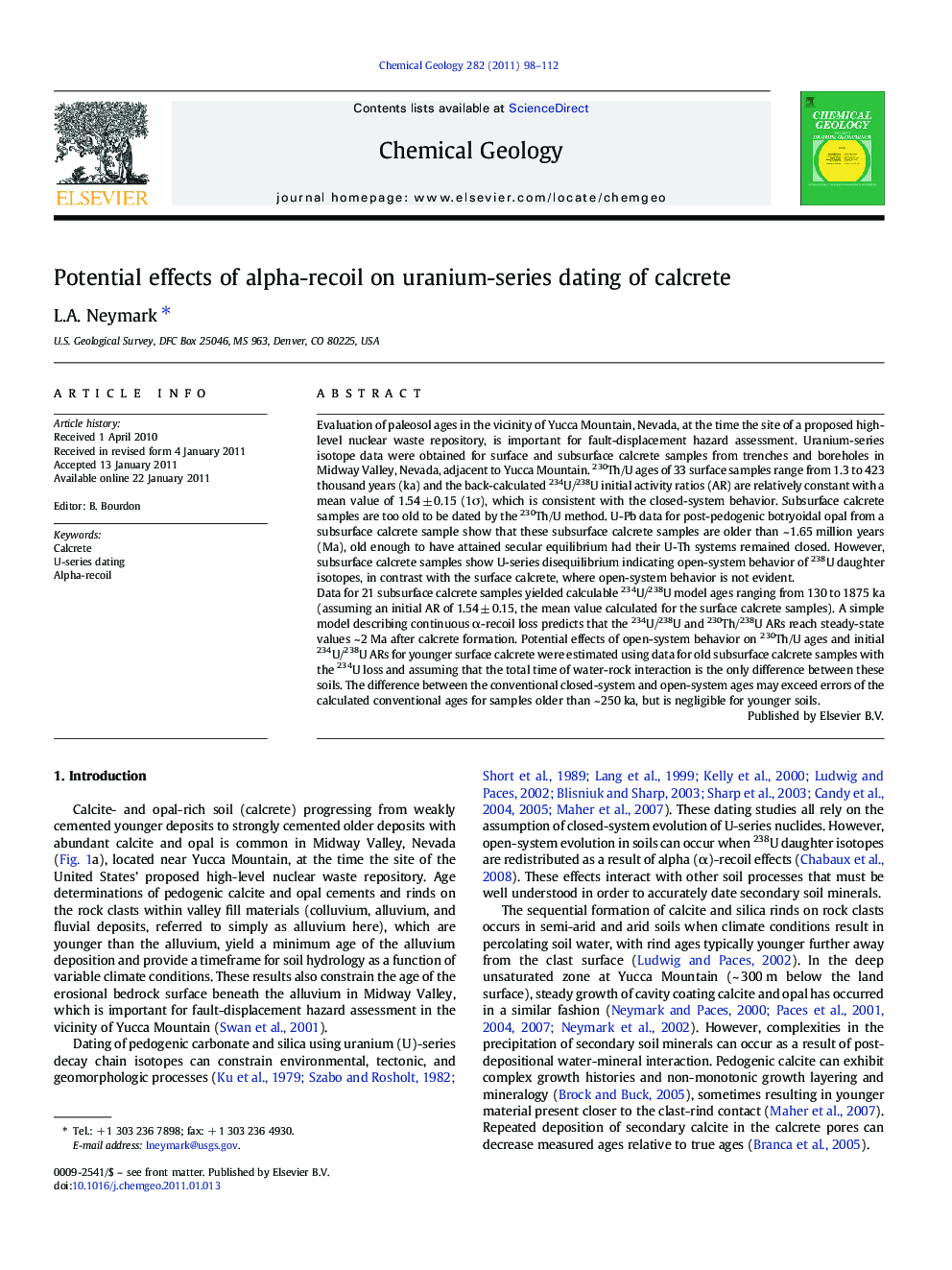| Article ID | Journal | Published Year | Pages | File Type |
|---|---|---|---|---|
| 4699796 | Chemical Geology | 2011 | 15 Pages |
Evaluation of paleosol ages in the vicinity of Yucca Mountain, Nevada, at the time the site of a proposed high-level nuclear waste repository, is important for fault-displacement hazard assessment. Uranium-series isotope data were obtained for surface and subsurface calcrete samples from trenches and boreholes in Midway Valley, Nevada, adjacent to Yucca Mountain. 230Th/U ages of 33 surface samples range from 1.3 to 423 thousand years (ka) and the back-calculated 234U/238U initial activity ratios (AR) are relatively constant with a mean value of 1.54 ± 0.15 (1σ), which is consistent with the closed-system behavior. Subsurface calcrete samples are too old to be dated by the 230Th/U method. U-Pb data for post-pedogenic botryoidal opal from a subsurface calcrete sample show that these subsurface calcrete samples are older than ~ 1.65 million years (Ma), old enough to have attained secular equilibrium had their U-Th systems remained closed. However, subsurface calcrete samples show U-series disequilibrium indicating open-system behavior of 238U daughter isotopes, in contrast with the surface calcrete, where open-system behavior is not evident.Data for 21 subsurface calcrete samples yielded calculable 234U/238U model ages ranging from 130 to 1875 ka (assuming an initial AR of 1.54 ± 0.15, the mean value calculated for the surface calcrete samples). A simple model describing continuous α-recoil loss predicts that the 234U/238U and 230Th/238U ARs reach steady-state values ~ 2 Ma after calcrete formation. Potential effects of open-system behavior on 230Th/U ages and initial 234U/238U ARs for younger surface calcrete were estimated using data for old subsurface calcrete samples with the 234U loss and assuming that the total time of water-rock interaction is the only difference between these soils. The difference between the conventional closed-system and open-system ages may exceed errors of the calculated conventional ages for samples older than ~ 250 ka, but is negligible for younger soils.
Research Highlights►Uranium-series data are different for surface and subsurface calcrete ►Surface samples seem to be consistent with the closed-system behavior ►U-series disequilibrium in > 1.6 Ma subsurface calcrete samples indicates open-system behavior ►Continuous α-recoil loss model predicts similar closed- and open-system ages for young soils ►The age difference may exceed errors for > 250 ka calcrete
